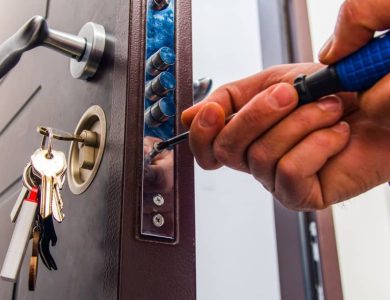
Don’t Let Cracks Ruin Your Patio: Concrete Back Patio Repair and Foundation Considerations
A well-maintained concrete back patio can be a cherished outdoor space for relaxation and entertainment. However, cracks and damage can quickly undermine its appeal and functionality. Addressing these issues through concrete back patio repair is essential not only for aesthetics but also for maintaining the integrity of your home’s foundation. In this article, we will explore the causes of cracks, the repair process, and the importance of foundation considerations.
Understanding the Causes of Cracks
Before diving into repair solutions, it’s crucial to understand what causes cracks in concrete patios. Several factors contribute to this problem:
1. Weather Conditions
Extreme weather conditions can cause concrete to expand and contract. In colder climates, freeze-thaw cycles can lead to surface cracking as water seeps into the cracks, freezes, and expands. Conversely, high temperatures can cause the concrete to shrink, leading to cracks.
2. Poor Installation
If the concrete was not poured or cured correctly, it may be more prone to cracking. Factors such as improper mixing, inadequate thickness, and insufficient curing time can weaken the structure.
3. Soil Movement
The soil beneath your patio plays a significant role in its stability. Expansive clay soils, shifting ground, or settling can all contribute to uneven pressure on the patio, leading to cracks. This is where foundation repair becomes critical, as underlying issues may need to be addressed.
4. Heavy Loads
Placing heavy furniture or equipment on a patio that isn’t designed to support such weight can lead to cracks. It’s important to consider the load-bearing capacity of your concrete back patio.
Signs That Your Concrete Back Patio Needs Repair
Recognizing the signs of damage early can prevent more extensive and costly repairs later on. Here are some indicators that your concrete patio may need attention:
- Visible Cracks: Cracks that are wider than 1/4 inch or deeper than 1/2 inch should be inspected and repaired promptly.
- Uneven Surfaces: If your patio has become uneven or has developed depressions, it may indicate underlying soil movement or foundation issues.
- Water Pooling: If water tends to pool in certain areas of the patio, it may suggest poor drainage or settling issues.
The Repair Process
Repairing a concrete back patio can be a straightforward process, depending on the severity of the damage. Here are the common steps involved in the repair process:
1. Assessment
Begin by assessing the extent of the damage. Determine if the cracks are superficial or if they indicate a more significant issue, such as foundation problems. Consulting a professional can help clarify this.
2. Cleaning the Cracks
Before applying any repair materials, clean the cracks thoroughly. Remove any debris, dirt, or loose concrete using a wire brush or a pressure washer. This step is vital for ensuring proper adhesion of repair materials.
3. Filling the Cracks
For small cracks, you can use a concrete filler or caulk designed for patio repair. Larger cracks may require a more substantial repair method, such as using a concrete patching compound. Follow the manufacturer’s instructions for application.
4. Resurfacing (if necessary)
In cases where the patio surface is extensively damaged, resurfacing may be necessary. This involves applying a new layer of concrete or overlay to restore the surface’s appearance and durability.
5. Sealing
Once the repair is complete, applying a sealant is crucial. Sealing your concrete back patio helps protect it from moisture, stains, and future damage, prolonging its lifespan.
Foundation Repair: A Crucial Consideration
While addressing cracks on your concrete patio is essential, it’s equally important to consider the foundation beneath it. If the soil is unstable or if there are significant foundation issues, repairs to the patio alone may not be sufficient.
1. Identifying Foundation Issues
Signs of foundation problems may include:
- Cracks in the interior walls
- Doors and windows that stick
- Uneven floors inside your home
If you notice these symptoms, it may be wise to consult a foundation repair expert. They can assess the situation and recommend appropriate solutions.
2. Types of Foundation Repair
There are several methods for foundation repair, depending on the specific issues at hand:
- Piering: This involves inserting piers beneath the foundation to provide additional support.
- Slabjacking: This technique raises sunken concrete slabs by injecting a material beneath them, filling voids and stabilizing the foundation.
3. Long-Term Solutions
Addressing foundation issues can not only save your patio but also protect the integrity of your entire home. Investing in proper foundation repair can prevent recurring problems, ensuring your patio remains a safe and enjoyable space.
Preventive Measures
Once your concrete back patio is repaired, taking preventive measures can help maintain its condition. Here are some tips to prevent future damage:
- Regular Maintenance: Inspect your patio regularly for any signs of cracks or settling.
- Proper Drainage: Ensure that water drains away from your patio to prevent pooling and water damage.
- Weight Management: Be mindful of the weight placed on your patio and avoid overloading it.
Conclusion
A concrete back patio is an invaluable asset to your home, providing a space for relaxation and enjoyment. By understanding the causes of cracks and the importance of foundation repair, you can take the necessary steps to maintain the integrity of your patio. Regular maintenance, timely repairs, and addressing underlying foundation issues will ensure that your patio remains a beautiful and functional outdoor oasis for years to come. Don’t let cracks ruin your patio—act quickly and keep your outdoor space in top shape!



